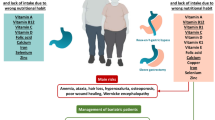Summary
The effect of oral N-acetyl-L-cysteine (NAC) on plasma sulphhydryls has been studied in healthy volunteers.
Following NAC 30 mg·kg−1, total NAC in plasma (i.e. free NAC and NAC as disulphides) reached a median peak concentration of 67 nmol·ml−1 within 45 to 60 min, and disappeared with an apparent half-life of 1.3 h. Only a fraction of total NAC (AUC 163 nmol·ml−1·h) was in the form of free NAC (AUC 12 nmol·ml−1·h, peak concentration 9 nmol·ml−1). Free cysteine was markedly increased (peak increment 49 nmol·ml−1; AUC 80 nmol·ml−1·h). Total cysteine and free and total glutathione in plasma were unchanged. Following the administration of 2 g paracetamol plasma cysteine and glutathione decreased (median decrement in AUC over 3 h was 5.1 nmol·ml−1·h and 3.8 nmol·ml−1·h, respectively).
In contrast, the administration of 2 g NAC together with paracetamol resulted in an increase in the AUC of cysteine (+29.2 nmol·ml−1·h) and glutathione (+4.6 nmol·ml−1·h).
The data show that NAC leads to a marked increase in circulating cysteine, in part by reacting with cystine and thereby forming mixed disulphides with cysteine and releasing free cysteine as shown in vitro. NAC had no effect on plasma glutathione in the absence of increased stress on the glutathione pools. However, NAC supports glutathione synthesis when the demand for glutathione is increased, as during the metabolism of paracetamol.
Similar content being viewed by others
References
Grassi C, Morandini GC (1976) A controlled trial of intermittent oral acetylcysteine in long-term treatment of chronic bronchitis. Eur J Clin Pharmacol 9: 393–396
Mitchell EA, Elliott RB (1982) Controlled trial of oral N-acetylcysteine in cystic fibrosis. Aust Paediatr J 18: 40–42
Morgan LR, Holdiness MR, Gillen LE (1983) N-acetylcysteine: Its bioavailability and interaction with ifosfamide metabolites. Semin Oncol 10 [Suppl 1]: 56–61
Prescott LF, Ballantyne A, Park J, Adriaenssens P, Proudfoot AT (1977) Treatment of paracetamol (acetaminophen) poisoning with N-acetyl-cysteine. Lancet 2: 432–434
Lauterburg BH, Corcoran GB, Mitchell JR (1983) Mechanism of action of N-acetylcysteine in the protection against the hepatotoxicity of acetaminophen in rats in vivo. J Clin Invest 71: 980–991
Corcoran GB, Wong BK (1986) Role of glutathione in prevention of acetaminophen-induced hepatotoxicity by N-acetyl-L-cysteine in vivo: Studies with N-acetyl-D-cysteine. J Pharmacol Exp Ther 238: 54–61
Olsson B, Johansson M, Gabrielsson J, Bolme P (1988) Pharmacokinetics and bioavailability of reduced and oxidized N-acetylcysteine. Eur J Clin Pharmacol 34: 77–82
Cotgreave IA, Moldeus P (1987) Methodologies for the analysis of reduced and oxidized N-acetylcysteine in biological systems. Biopharm Drug Dispos 8: 365–375
Borgstroem L, Kagedal B, Paulsen O (1986) Pharmacokinetics of N-acetylcysteine in man. Eur J Clin Pharmacol 31: 217–222
Lauterburg BH, Mitchell JR (1987) Therapeutic doses of acetaminophen stimulate the turnover of cysteine and glutathione in man. J Hepatol 4: 206–211
Newton GL, Dorian R, Fahey RC (1981) Analysis of biological thiols: Derivatization with monobromobimane and separation by reverse-phase high-performance liquid chromatography. Anal Biochem 114: 383–387
Kagedal B, Kallberg M, Martensson J (1984) Determination of non-protein-bound N-acetylcysteine in plasma by high-performance liquid chromatography. J Chromatogr 311: 170–175
Aw TY, Ookhtens M, Kaplowitz N (1986) Mechanism of inhibition of glutathione efflux by methionine from isolated rat hepatocytes. Am J Physiol 251: G354-G361
Reed DJ, Beatty PW (1978) The role of the cystathionine pathway in glutathione regulation by isolated hepatocytes. In: Sies H, Wendel A (eds) Functions of glutathione in liver and kidney; Springer, Heidelberg Berlin New York, pp 13–21
Adams JD, Lauterburg BH, Mitchell JR (1983) Plasma glutathione and glutathione disulfide in the rat: Regulation and response to oxidative stress. J Pharmacol Exp Ther 227: 749–754
Lauterburg BH, Velez ME, Mitchell JR (1984) Plasma glutathione as an index of intrahepatic GSH in man: Response to acetaminophen and chronic ethanol abuse. Hepatology 4: 1051 (abstract)
Author information
Authors and Affiliations
Rights and permissions
About this article
Cite this article
Burgunder, J.M., Varriale, A. & Lauterburg, B.H. Effect of N-acetylcysteine on plasma cysteine and glutathione following paracetamol administration. Eur J Clin Pharmacol 36, 127–131 (1989). https://doi.org/10.1007/BF00609183
Received:
Accepted:
Issue Date:
DOI: https://doi.org/10.1007/BF00609183




